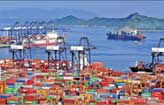High growth can't hide problems
Updated: 2011-08-19 10:55
By Hongyi Lai (China Daily European Weekly)
|
 |
For decades, officials in China have been trotting out a mantra beloved by economists: All problems can be solved by economic growth. This rudimentary philosophy dictates that as long as impressive economic growth is generated, and sustained then the stability of Chinese society will be secure.
It is without doubt that over the past three decades, China has been transformed beyond recognition thanks to an average annual growth rate of close to 10 percent. Isolated until 1978, China has become the world's largest exporter and second-largest economy.
This period of relentless high growth has helped China resolve numerous problems restraining the country's development. Hundreds of millions of Chinese, especially in the countryside, have been lifted out of poverty on a scale unprecedented in history.
Living standards have risen for most Chinese and, in the booming cities, innovative and futurist designs have replaced Soviet-style concrete blocks. But in recent years, challenges to the "growth-as-panacea" model of governance have grown fiercer, casting serious doubts over this philosophy as a basis for sustainable development. Direct causal links can be drawn between fast economic growth and incidents of localized social discontent.
Protests and riots have often been triggered by minor happenings or unfounded rumors, a reflection of the frustration among the working class that has built up as the gap between the haves and have-nots has widened. The gap, also known as the Gini coefficient in China, is now around 0.5, well above the internationally recognized warning level of 0.4. And the disposable income of the average rural resident fell to 30.5 percent of that of an average urban resident in 2006, down from 53.8 percent in 1985.
Many local governments have focused most of their efforts on catering to the needs of entrepreneurs rather than offering economic assistance and providing welfare to the lower-income classes. Using the governmental budget for social spending is viewed as economically wasteful and unhelpful for generating high economic growth. Many officials would rather concentrate on wooing investment in order to generate GDP than on collecting and channeling revenue into local welfare programs and equal income distribution.
Three recent instances of unrest in particular serve as examples of how collective protests have gone hand in hand with high economic growth. In June 2008, in Weng'an of Guizhou province, rumors spread that a drowned school girl had been raped by the son of a local official and that the local authorities had tried to cover it up. Angry local residents responded by setting fire to the offices of the local public security bureau, government and Party committee.
In the years leading up to 2008, Weng'an experienced startling economic development largely due to its booming mining sector. In 2007, the year before the riots, GDP growth in Weng'an was 14 percent. Both GDP growth and per capita GDP were ranked 42nd of the 87 cities and counties in Guizhou province.
Phosphorous ore output, one of the most important sectors in the county, experienced spectacular growth of 38.5 percent a year during the 10th Five-Year Plan (2001-2005). In 2007, Qiannan prefecture, where Weng'an is located, urban employees' wages soared by 27 percent. Its growth was the third highest of the province's nine prefectures. These impressive growth statistics did not seem to suggest the possibility of riots in Weng'an.
However, it was the reckless pursuit of high growth by local leaders that allowed discontent with local leaders and police to grow. The authorities allowed phosphorous mining companies to extract rich deposits and damage local cropland, yet failed to provide rural residents and farmers with a fair level of compensation.
The incident also shed light on the dynamics of the interaction between discontented people, local officials and the central government. As the riots in Weng'an became a national and international news headline, top leaders in China immediately acted to address the popular grievances there.
In June, riots broke out in the Inner Mongolia autonomous region. The direct trigger was the death of a Mongolian herdsman protesting against a local mine in Xilin Gol League. A driver for the coal mine company was said to have intentionally run over the herdsman. This tragedy triggered protests by more than 1,000 students in front of the local government offices.
Ironically, since 2003, Inner Mongolia has been the leading Chinese region in terms of annual economic growth, even outstripping the booming coastal economies. Xilin Gol League, the epicenter of this year's protest, is no laggard either. In 2009, its GDP grew by 21.5 percent, the fourth-highest of the 12 prefectures in the autonomous region.
Its per capita GDP reached 47,000 yuan (5,100 euros), surpassing the national average of 40,200 yuan. Nevertheless, reckless extraction of coal by mining companies has created serious environmental degradation. Mining and trucking activities have led to destruction of pasture, which the Mongolian herders regard as the primary source and symbol of their traditional livelihood.
In 2009, the number of sheep in the league declined by 9 percent compared to the previous year. This led to the clash between herders and employees of the trucking companies. Herders do not benefit as much as they should from the high growth. In the league, the per capita income of farmers and herders were ranked only eighth of the 12 prefectures.
The blatant pursuit of growth is not limited to underdeveloped provinces and rural areas. Even in the cities, local officials have developed the habit of building eye-catching towers and landmarks, but shun the basic and hardly visible projects that can benefit average dwellers in the cities.
The former, they reason, can impress their superiors, business visitors and tourists. After all, no one pays close attention to the underground drainage systems that help channel waste and rainwater. Both officials and ordinary people paid the price for this neglect in June when several large and rapidly developing cities in China were inundated after a few hours of heavy rain.
In Beijing Capital International Airport, the runway was flooded. In the streets, cars and buses were submerged and traffic was paralyzed until late into the night. In Wuhan, the famed East Lake rapidly swamped the nearby universities, and campuses were transformed into water theme parks for the students. These incidents caused uproar among citizens toward local governments.
These examples suggest that economic growth alone does not offer a simple solution for social problems and conflict. In the course of development it is vital that common people, not just the elite, benefit from strong economic growth. Blatant pursuit of growth and a disregard for the legitimate interests of ordinary people will lead to social tension and undermine stability. After all, local residents' genuine satisfaction with local development is much more important than showy development projects and impressive growth statistics.
A culture change is needed among the ranks of local officials. Many officials view high growth as the ultimate barometer of governance of their localities. They often regard local residents' legitimate demands for the protection of their interests as obstacles to rapid economic development. They favor swift acquisition of rural land for industrial parks and property developments and provide low compensation to farmers to reduce business costs and woo investors.
One of the most serious and widespread cases of infringement of rights arises from the use of agricultural land. It is estimated that from 1987 to 2001, 34 to 51 million farmers lost their land to non-agricultural use. According to a survey of 10 provinces, 69 percent of the land for industrial parks was acquired by local authorities illegally. In many of these cases, inadequate compensation was commonplace.
In inland provinces such as Henan, Yunnan, and Shanxi, farmers' income declined by 25 percent, 26 percent and 9.4 percent respectively. Even in coastal areas such as Tianjin and Liaoning, despite the higher income after compensation, farmers who lost land suffered from a real decline in income as a result of them moving into urban areas where living expenses were higher.
High economic growth is no panacea for social and political problems. Stability can be earned not only through stimulating economic growth, but also by fairly distributing its benefits among the population and respecting their legitimate rights and interests. This mixture of policies is a far more effective remedy for social problems than growth alone.
Only by addressing the negative side of its governance can China experience genuine social stability in the course of high growth. Inviting people to judge the performance of their officials is thus necessary. Otherwise, social protests will continue.
The author is associate professor and PhD program director at the School of Contemporary Chinese Studies and the China Policy Institute at the University of Nottingham. The opinions expressed in the article do not necessarily reflect those of China Daily.
E-paper

Blue economy gets a lift
Coastal areas of Shandong, Zhejiang and Guangdong to spearhead sector development.
The light touch
Long way to go
Outdoor success
Specials

Star journalist remembered
Friends, colleagues attended a memorial service to pay tribute to veteran reporter Li Xing in US.

Hot pots
Tea-making treasures catch the fancy of connoisseurs as record prices brew up interest

Hear we go
Polish Audiologist helps thousands of Chinese hear for the first time.
